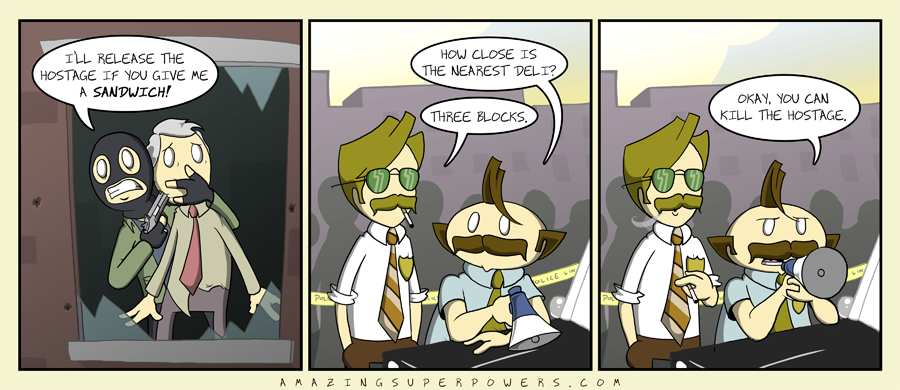If you know me well, you’ve heard my stories about how Ury and Fry’s famous Getting to Yes: Negotiating Agreement Without Giving In
has made me tens of thousands of dollars and saved a few of my friendships! Wanted to post the gist of the book, what they call the Analytical Table of Contents here because I couldn’t find it easily online. While this summary is great, it’s certainly no substitute for a book that’s $5 at every book reseller in the world. Buy it and read it. – Andrew

Getting to Yes: Negotiating Agreement Without Giving In – Roger Fisher & William Ury
Analytical Table of Contents
*** *** I. THE PROBLEM *** ***
1. DON’T BARGAIN OVER POSITIONS
Arguing over positions produces unwise agreements 4
Arguing over positions is inefficient 5
Arguing over positions endangers an ongoing relationship 6When there are many parties, positional bargaining is even worse 7
Being nice is no answer 7
There is an alternative 9
*** *** II. THE METHOD *** ***
2. SEPARATE THE PEOPLE FROM THE PROBLEM
Negotiators are people first 18
Every negotiator has two kinds of interests: in the substance and in the relationship 19
The relationship tends to become entangled with the problem 20
Positional bargaining puts relationship and substance in conflict 20
Separate the relationship from the substance; deal directly with the people problem 21
Perception 22
Put yourself in their shoes 23
Don’t deduce their intentions from your fears 25
Don’t blame them for your problem 25
Discuss each other’s perceptions 26
Look for opportunities to act inconsistently with their perceptions 26
Give them a stake in the outcome by making sure they participate in the process 27
Face-saving: Make your proposals consistent with their values 28
Emotion 29
First recognize and understand emotions, theirs and yours 29
Make emotions explicit and acknowledge themas legitimate 30
Allow the other side to let off steam 31
Don’t react to emotional outbursts 31
Use symbolic gestures 32
Communication 32
Listen actively and acknowledge what is being said 34
Speak to be understood 35
Speak about yourself, not about them 36
Speak for a purpose 36
Prevention works best 36
Build a working relationship 37
Face the problem, not the people 37
3. FOCUS ON INTERESTS, NOT POSITIONS
For a wise solution reconcile interests, not positions 40
Interests define the problem 40
Behind opposed positions lie shared and compatible interests, as well as conflicting ones 42
How do you identify interests? 44
Ask “Why?” 44
Ask “Why not?” Think about their choice 44
Realize that each side has multiple interests 47
The most powerful interests are basic human needs 48
Make a list 50
Talking about interests 50
Make your interests come alive 50
Acknowledge their interests as part of the problem 51
Put the problem before your answer 51
Look forward, not back 52
Be concrete but flexible 53
Be hard on the problem, soft on the people 54
4. INVENT OPTIONS FOR MUTUAL GAIN
Diagnosis 57
Premature judgment 57
Searching for the single answer 58
The assumption of a fixed pie 59
Thinking that “solving their problem is their problem” 59
Prescription 60
Separate inventing from deciding 60
Before brainstorming 61
During brainstorming 61
After brainstorming 62
Consider brainstorming with the other side 63
Broaden your options 65
Multiply options by shuttling between the specific and the general: The Circle Chart 66
Look through the eyes of different experts 69
Invent agreements of different strengths 69
Change the scope of a proposed agreement 70
Look for mutual gain 70
Identify shared interests 71
Dovetail differing interests 73
Any difference in interests? 74
Different beliefs? 74
Different values placed on time? 75
Different forecasts? 75
Differences in aversion to risk? 75
Ask for their preferences 75
Make their decision easy 76
Whose shoes? 76
What decision? 77
Making threats is not enough 79
5. INSIST ON USING OBJECTIVE CRITERIA
Deciding on the basis of will is costly 81
The case for using objective criteria 82
Principled negotiation produces wise agreements amicably and efficiently 83
Developing objective criteria 85
Fair standards 85
Fair procedures 86
Negotiating with objective criteria 88
Frame each issue as a joint search for objective criteria 88
Ask “What’s your theory?” 88
Agree first on principles 88
Reason and be open to reason 89
Never yield to pressure 90
“It’s company policy” 92


